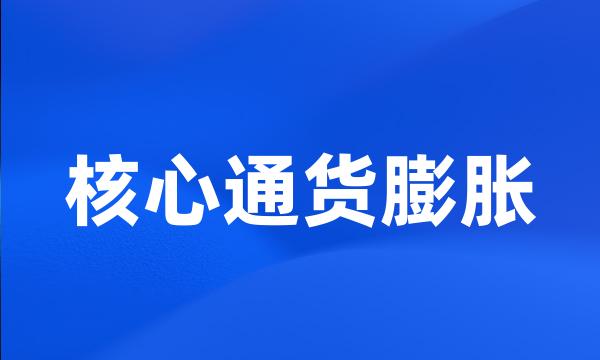核心通货膨胀
- 网络Core inflation;core inflation rate
 核心通货膨胀
核心通货膨胀-
大多数国家使用总CPI指数作为度量标准,可调整的CPI如核心通货膨胀指标也逐渐受到一些国家的重视。
When majority of the nation use the CPI as the measure of inflation , the adjustable CPI e.g. core inflation index has gradually gained more concerns from some nations .
-
核心通货膨胀指标之所以被高度重视,一个重要动因就是CPI、PPI等整体价格指数的分类指数的波动具有结构性。
The reason why core inflation index is paid so much attention to is that the fluctuations of sub-indices of such comprehensive price indices as CPI and PPI are structural .
-
综合来看,本文采用的剔除食品的核心通货膨胀方法有一定的平抑波动,它反应长期趋势的作用,而由SAS拟合的时间序列模型效果也达到了不错的效果。
Taken together , this paper adopts the method of core inflation excluding food , have some stabilizing fluctuations , it reflects the role of long-term trends , but by SAS fitting time-series model results also reached good results .
-
从近几年的文献可以看出,国内的学者也开始尝试研究核心通货膨胀,2006年中国人民银行武汉分行用一定的方法计算出我国的核心CPI。
We could see from the recent literature that domestic scholars have begun to try to study the core inflation . In 2006 , Wuhan Branch of PBOC calculated our core CPI with a certain method .
-
为消除CPI中短期波动成分对一般物价水平长期变动趋势的影响,人们提出运用核心通货膨胀作为通货膨胀长期变动趋势的度量。
For eliminating the influence of long-term change trends in the general price level due to the components of CPI short-term fluctuations , people has maken use of " core inflation " as a inflation measure of long-term change in trend .
-
Alchian和Klein(1973)首次系统提出了对传统核心通货膨胀指数的批评,以及使用资产价格等其他经济变量对其进行修正的想法。
A formal criticism to the traditional core inflation index and proposal of building a new inflation index by using asset prices ' adjustment was made by Alchian and Klein in 1973 for the fist time .
-
因此,我国在根据物价水平的短期波动调整货币政策时,应主要关注CPI等标题通货膨胀指标,但同时也需要前瞻性关注核心通货膨胀指标。
Consequently , When China adjust monetary policy according to the transitory fluctuations of prices , the headline inflation index such as CPI should be mainly concerned , and the core inflation index should be pay attention to in the same time in a forward-looking way .
-
资产价格对核心通货膨胀指数的修正
Asset Prices ' Adjustment to Core Inflation Index
-
如果把能源价格变化也剔除,那么核心通货膨胀率会降到1.1%。
Take energy out as well , and the core rate drops to1.1 % .
-
核心通货膨胀的度量方法主要有两类,分别是统计法和建模法。
There are two main measures of core inflation , statistic method and model method .
-
从核心通货膨胀的度量方法来看,主要是统计方法和基于模型的方法。
Current methodologies to measure core inflation are mainly statistical or based on econometric models .
-
本文正是基于此种背景,开始系统研究我国的核心通货膨胀问题。
The paper based on this background start to study the core inflation index of China .
-
当前,一些发达国家或经济体都已编制和发布了核心通货膨胀率。
At present , some developed countries or economies have been compiled and released core inflation .
-
但是,如果货币政策过度关注核心通货膨胀同样有政策风险。
But there are also policy risks if monetary policy is too much affected by core inflation .
-
中国核心通货膨胀的估计
Measuring China 's Core Inflation
-
各国中央银行对核心通货膨胀的广泛关注缘于它作为一种政策工具的有用性。
National central banks on core inflation , widespread attention as a policy tool due to its usefulness .
-
但是除了瓶装食品和能源商品以外,核心通货膨胀率适中,只上涨了0.20%。
But core inflation outside the bottle food and energy sectors was modest , up just 0.20 % .
-
与核心通货膨胀不同的是整体物价消费度量标准包括迅速增长的燃料费以及食品价格。
Unlike core inflation , the headline measure includes fuelcosts , which rose sharply , as well as food prices .
-
因为核心通货膨胀和非核心通货膨胀之间没有明确的界限,所以要精确地测度核心通货膨胀很困难。
For there is no clear line between core inflation and common inflation , so it is very difficult to measure core inflation .
-
虽然核心通货膨胀不及去年的水平,但通货膨胀仍是政策制订者关心的问题。
Whilst the core rate of inflation has come down from last year 's levels , inflation does remain a concern for policy makers .
-
通过整体通货膨胀率与各种核心通货膨胀率的走势特征的相互比较,表明核心通货膨胀率具有相对的稳定性。
Through comparing characteristics of the trend of core inflation with CPI and the other core inflation indexes shows that core inflation has relative stability .
-
但食品和能源价格高企并非通胀恶化的全部原因&核心通货膨胀率也在节节攀升,宽松的货币政策难逃其咎。
But this is only part of the story : core inflation rates are also creeping up , and lax monetary policies are to blame .
-
现阶段越来越多的国家和地区构建了本国(地区)的核心通货膨胀指标,并将其作为货币政策的重要关注指标。
Presently , more and more countries and regions have built their core inflation indices and consider them as an important concern of monetary policy .
-
由于核心通货膨胀与非核心通货膨胀之间并不存在清晰的界限,因而精确度量核心通货膨胀较为困难。
Since there is no clear cut between core inflation rate and common inflation rates , measuring core inflation rate accurately is of great difficulty .
-
于是,本文借鉴国外经验,运用剔除法和有限影响估计法测算了我国近五年的核心通货膨胀率。
In this paper , learn from foreign experience , measures core inflation for china in the past five years using exclusion and limited-influence estimator respectively .
-
核心通货膨胀的计算通常是原有的基于统计调查的传统价格指数,在这些价格指数的基础上进行适当的处理获得。
Core inflation are usually calculated based on the original survey of the traditional price index , in which the price index based on the proper handling of access .
-
然而由于核心通货膨胀代表通货膨胀中持续的、稳定的部分,在反映价格水平的未来长期趋势方面具有优势。
However due to core inflation represents the sustained , stable part of the inflation , it is better than CPI in the place reflecting the price level in the future long-term trends .
-
在这种背景下,我国的中国人民银行也开始考虑核心通货膨胀指标的内涵和是否要参照核心通货膨胀指标制定货币政策,但是我国并没有测度并定期对外公布核心通货膨胀指标。
In this background , the people bank of China starts to refer to core inflation index when they analyze the situation of inflation and make monetary policy , but our country did not measure and regularly released core inflation index .
-
这启示我们,使用货币政策调控通货膨胀时,必须区分不同类型的通货膨胀,货币政策采取盯住核心通货膨胀的方式比盯住标题通货膨胀更为合理。
This tells us that if we have to use monetary policy to cope with inflation , a distinction must be made among different types of inflation . And monetary policy pegging on core inflation will be more reasonable than pegging on headline inflation .
-
相反,他强烈暗示,利率可能会在5.25%的水平上维持一段时间,他宣称“目前的政策取向可能是支持经济的可持续增长,逐渐降低核心通货膨胀率”。
Instead , he dropped a heavy hint that rates may stay on hold at 5.25 per cent for some time , declaring " the current stance of policy is likely to foster sustainable economic growth and a gradual ebbing of core inflation " .
